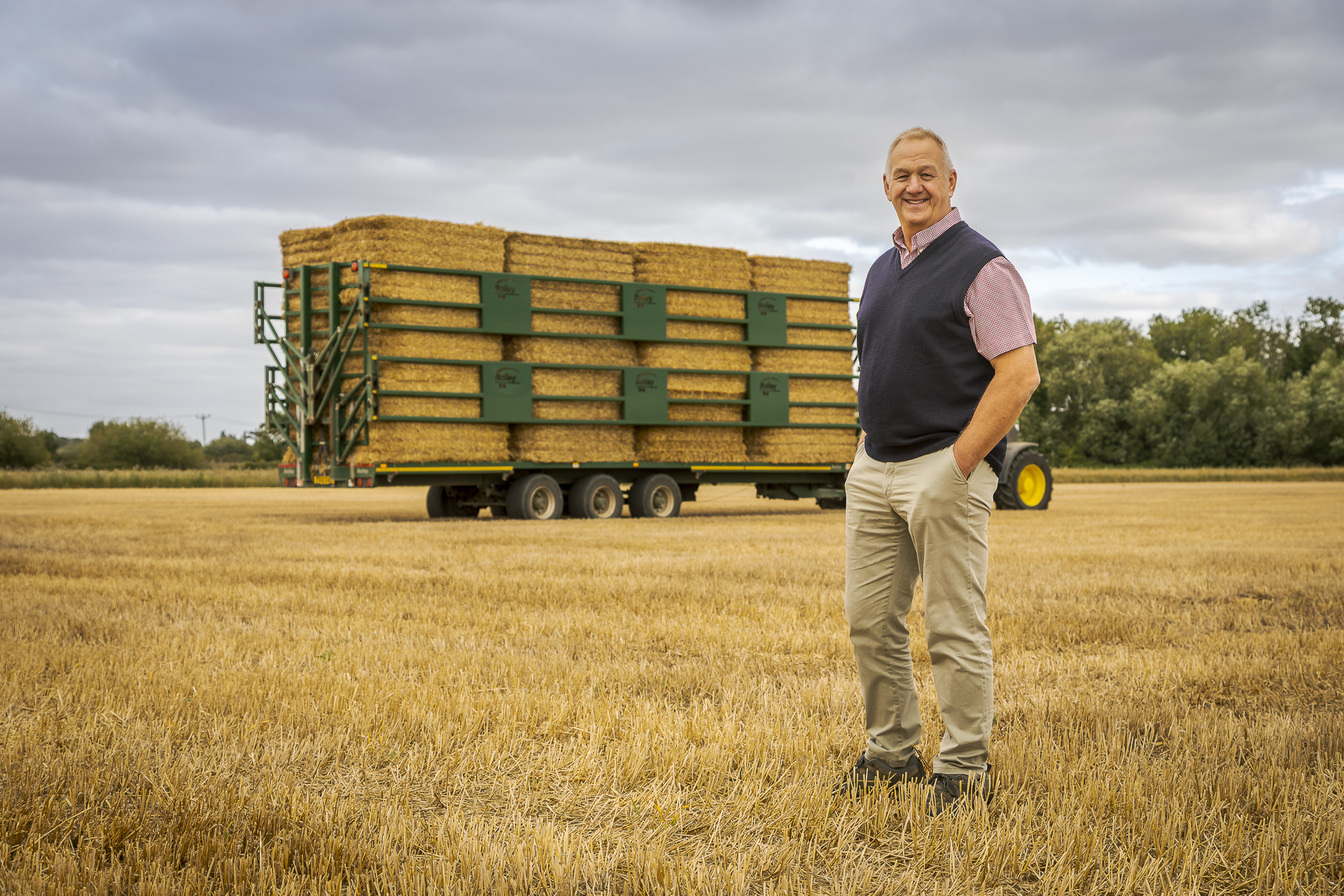
At J H Baxter & Sons Ltd, farming and agricultural contracting have been at the heart of the business since 1958. Director Andrew Baxter shares how Bailey Trailers, from bale trailers with hydraulic clamps to Beeteaper models, play a vital role in keeping operations safe, efficient and reliable, while helping the business meet the demands of modern agriculture.
Can you tell us a bit about yourself and the business?
I’m Andrew Baxter of J H Baxter and Sons Ltd, we’re based in Sleaford, Lincolnshire. I’m a director of the business alongside my brother Adrian. The business was started by my Father in 1958. We’re agricultural contractors and hauliers, we also have our own farm.
On the farm we grow wheat, barley and sugar beet. We also rent out some of the better land for parsnips, onions and potatoes. The largest aspect of our agricultural business is straw. We supply straw for multiple uses, for example: carrot covering, power stations and cattle farmers across the country.
What challenges do you face?
The same as many people in UK agriculture – intensity of farming, ever changing weather patterns and price pressure, to name but a few.
What do you look for in a trailer?
Reliability is the first word that springs to mind. We often travel up to 25 miles away from base. We need to know that we can go out and do a good day’s work without any issues. Additionally, I would say that value for money is very important to us.
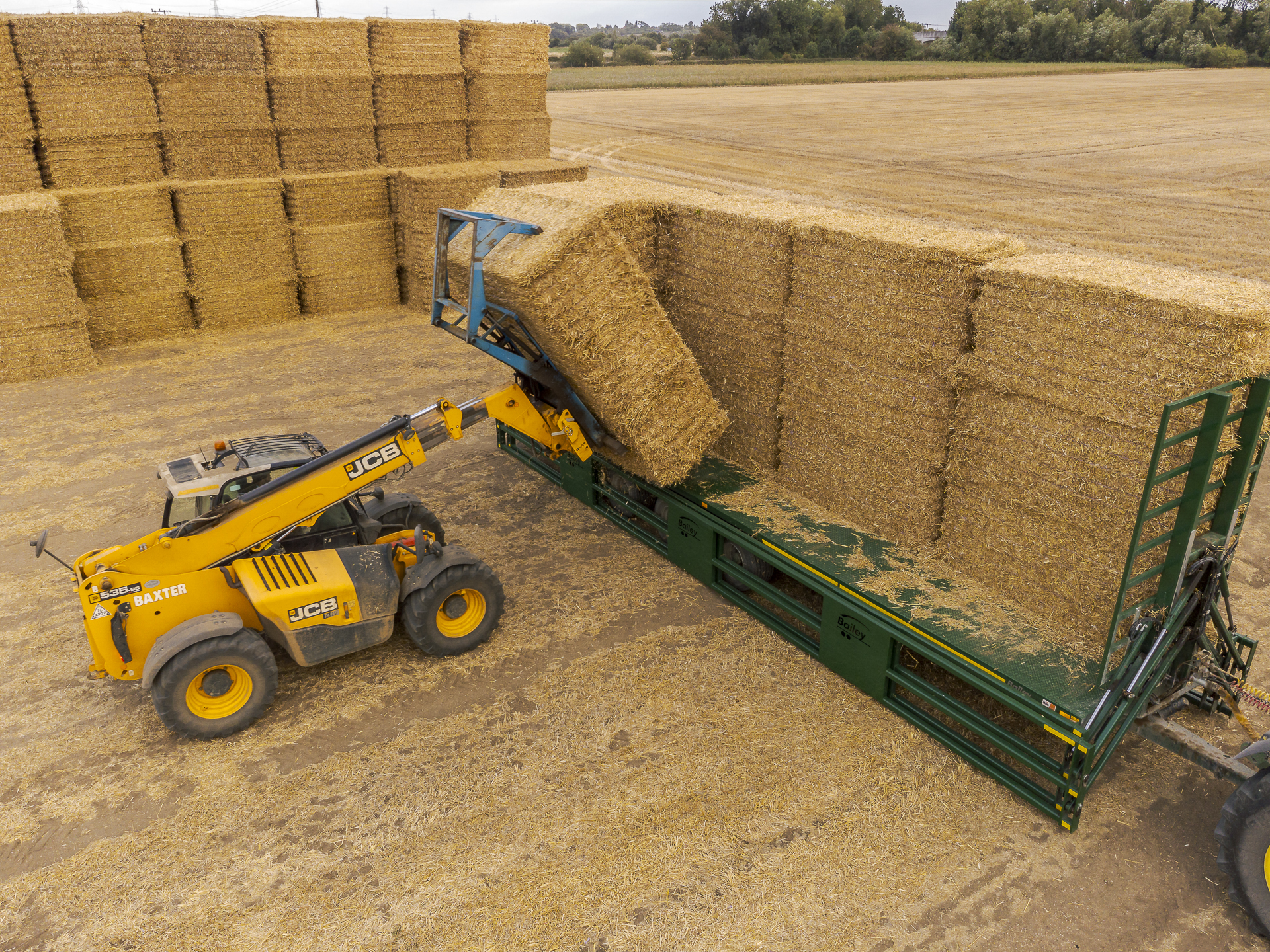
How long have you run Bailey trailers?
It must be about 30 years now. Our first Bailey was an old 10-tonne dumper trailer, which was pretty indestructible. That dump trailer carted cattle muck, chicken muck, general waste and sugar beet week after week after week. It was a brilliant piece of kit. So, when we were looking for another trailer, there was only one place to go.
Which Bailey trailers do you run and what are they used for?
We’re currently running 2 bale trailers with hydraulic clamps on the straw side of the business. We run a fleet of 6 beeteaper trailers, which haul sugar beet, muck and waste. They are fitted with grain hatches and front windows; which gives us the option to use them for our grain harvest.
We also have a low loader trailer, which is very handy for moving seed corn around the farm. It’s fitted with a heavy-duty electrical winch. Should a machine become stuck a long way from home, it can easily be retrieved. This trailer was called into action only the other day, we had to recover a broken-down tractor from a farm several miles away.
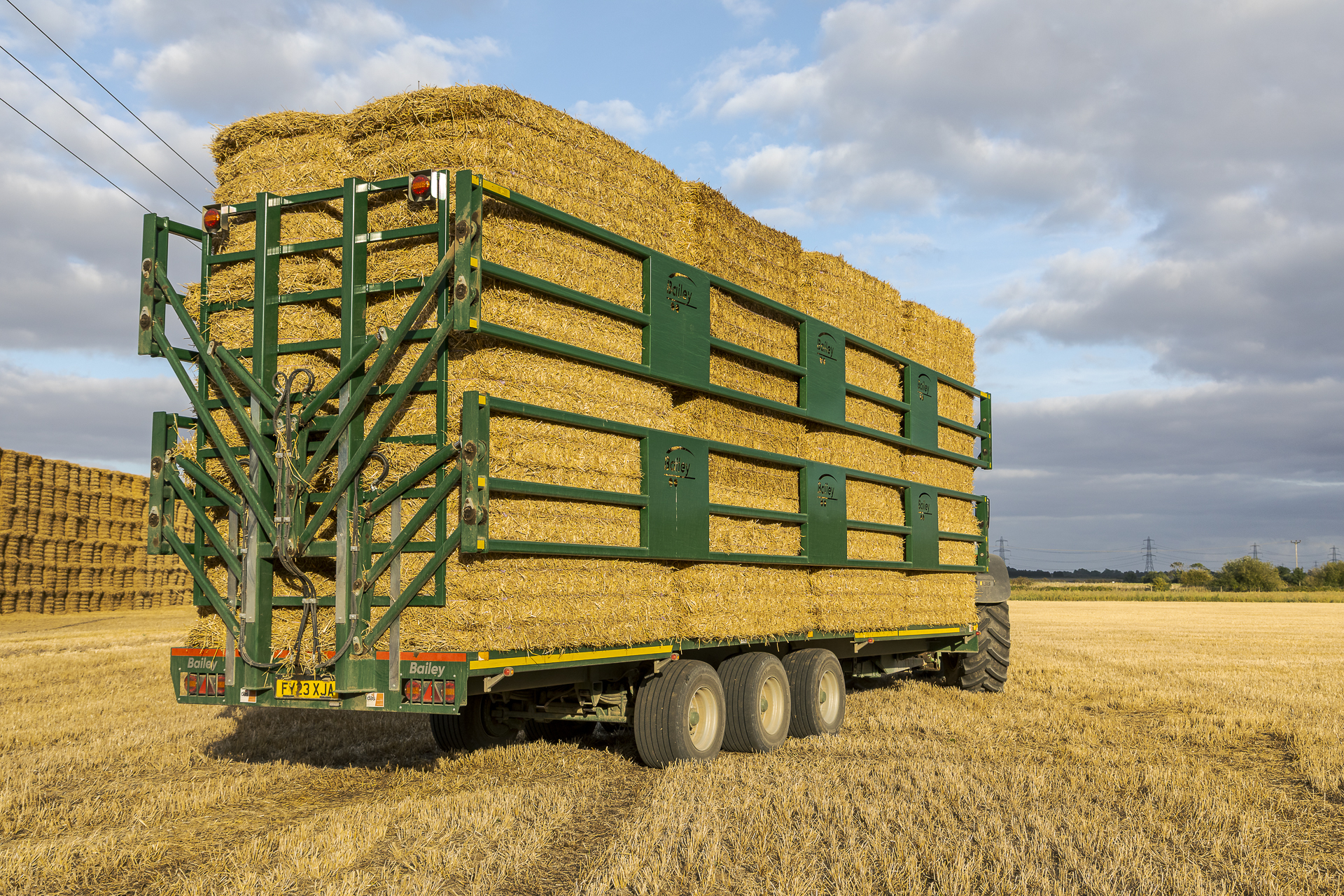
What difference has running bale trailers with hydraulic clamps made to your work?
Straw is such a big part of our business; we’re supplying to a straw-fired power station locally. We wanted these loads to be delivered safely and securely.
Both bale trailers are 35 feet long triaxle models, which is an ideal length for us. Typically, eight-foot bales, which may vary slightly in length, fit along perfectly. The hydraulic pressure applied by the clamps is perfect for protecting the load and making it very safe to travel. An idea that has been well thought through, as you would expect from Bailey Trailers.
When you look at a typical harvesting day, we could be out for 12 hours or even longer. The ability to just pull your spool valves up each time to raise or lower the sides makes such a difference. The reduction in time over strapping is obvious. However, driver fatigue and in particular safety is also much improved.
In terms of savings, we’ve reduced some jobs by at least 2 loads a day. This makes a big difference to our labour and fuel costs. Because we can carry loads 3 high, we are able to load straight from the fields and into the stacks in multiples of three. The whole operation is now far more efficient.
How do you find the performance of the sprung drawbar in relation to the ride in the tractor?
Feedback from drivers is very positive. Coupling the sprung draw bar to the cab and front axle suspensions provides a much smoother ride. Working 12 hours plus in a day, it’s this kind of comfort that helps the operator to achieve maximum output.
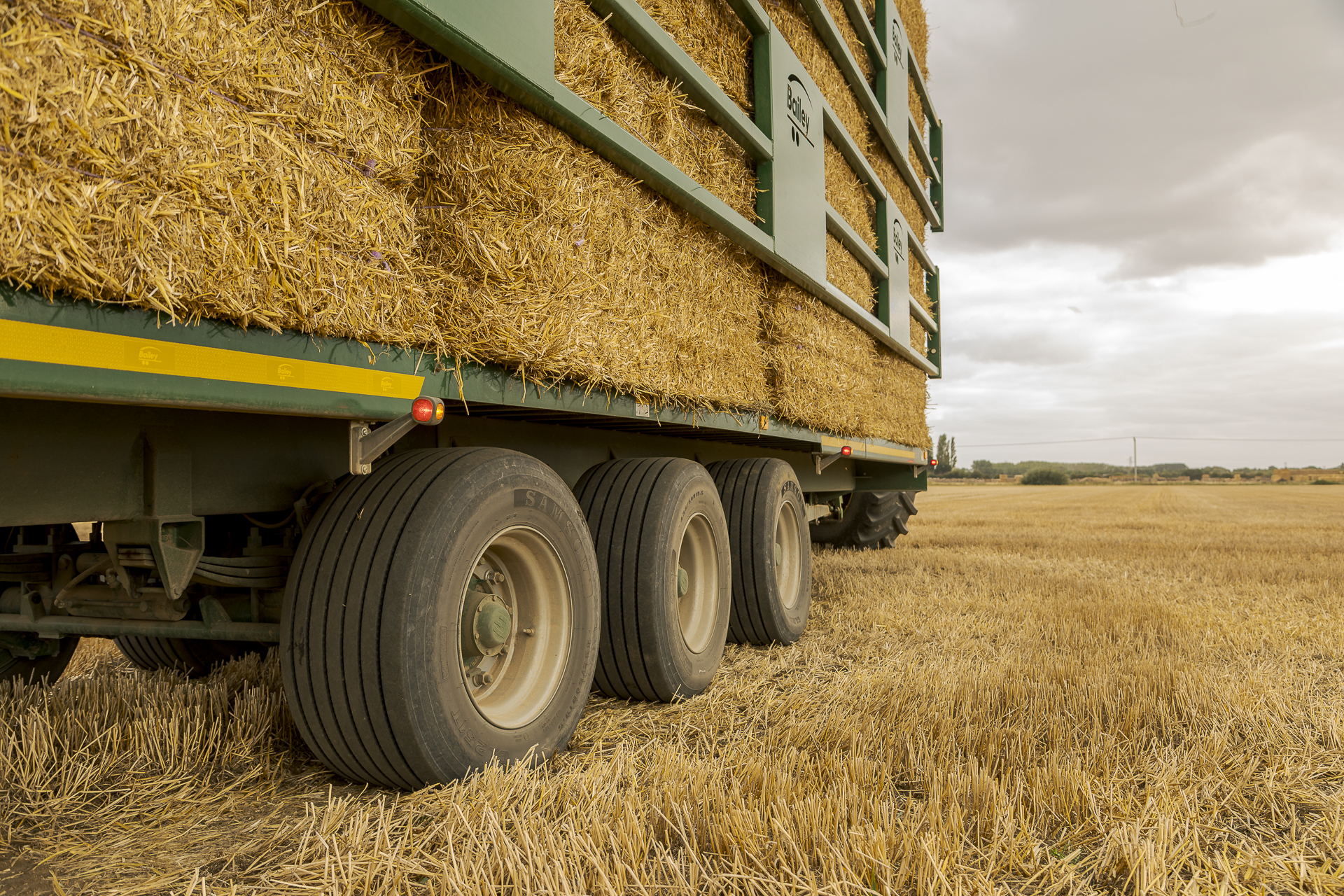
Are there any other particular features that have impressed you?
When we are working in poor light conditions or in the dark, the lights are excellent. The undercarriage is also very stable on all Bailey trailers. We’re particularly impressed with the rear steering axle on the bale trailers, for tight turns and difficult access points this really helps the driver. A very good idea.
How would you rate the back-up from Bailey?
Excellent. We’ve got a very good relationship with the Bailey family; they look after us. When we speak to other farmers and growers, they say the same.
In your opinion what sets Bailey apart?
An excellent product, safe, reliable, durable, efficient and good value for money.
Can you sum up what owning Bailey trailers means to your business?
In our experience of running agricultural machinery, you generally find that top brands come into their own. This is certainly the case when you run a fleet of Bailey trailers.
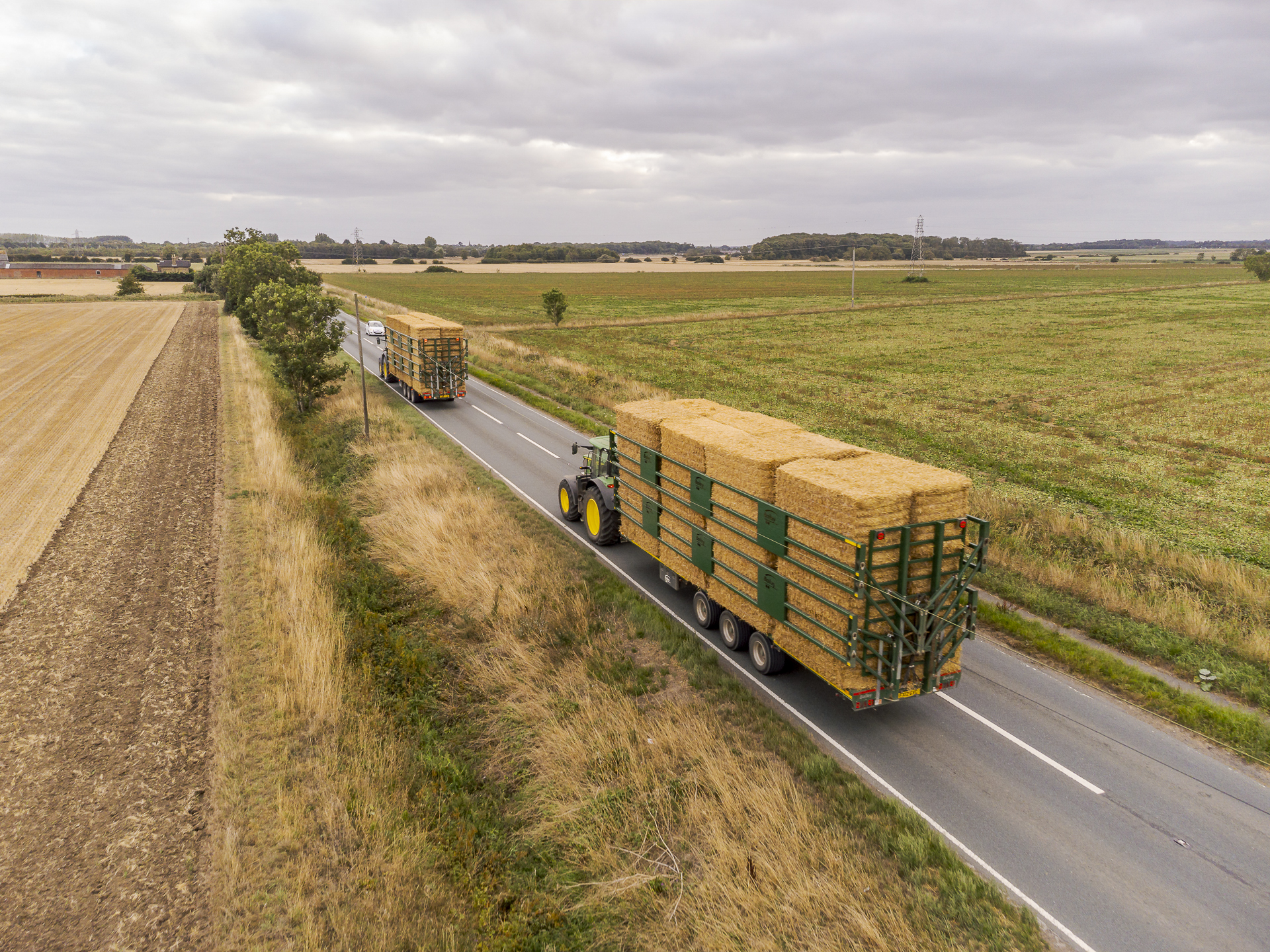
Bale clamps – frequently asked questions
What clamp lengths are available?
You can specify 850mm, 1700mm, 2380mm or 3060mm.
What height can you load with the clamps?
You can load bales to a height of three Hesston’s with our twin bale clamps.
Can you activate the clamps on one side only?
Yes, both sides are powered independently, you can select either nearside or offside for loading.
How long does it take for the clamps to open and close?
It takes approximately 10-15 seconds for a single clamp and between 15 – 20 seconds for twin clamps.
For more information on our bale trailers and hydraulic clamping system, click here ››




